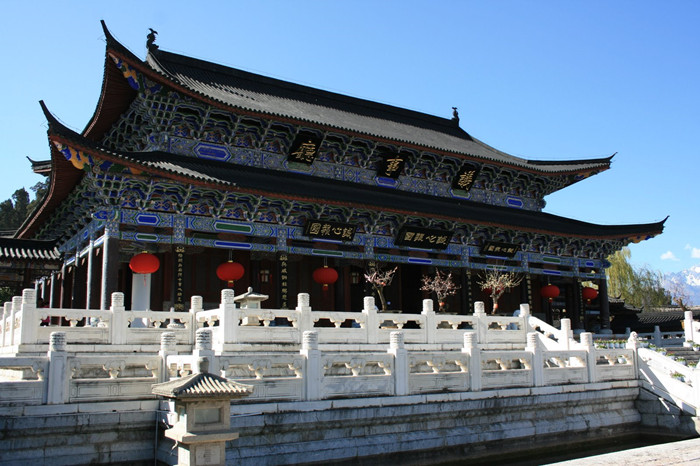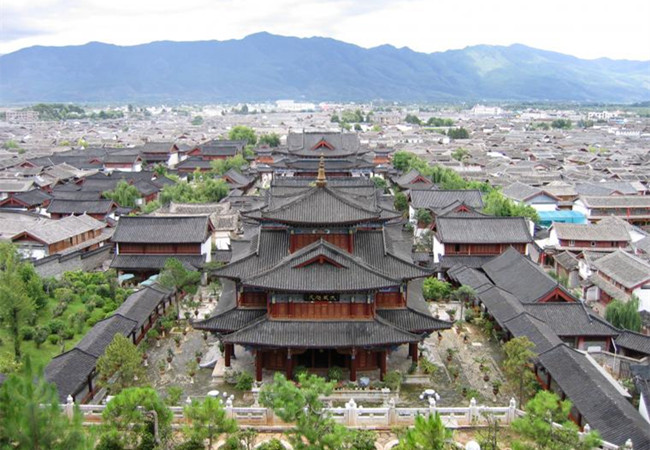
The ancestors of the Mus date back of the time before the Tang Dynasty. When Kublai Khan of Mongolia passed by Lijiang to conquer Dali in 13AD, Aliang, the head of the Naxi people, surrendered to him initiatively. In1382, Ade, the governor of Lijiang submitted to the authority of the Ming Government. The first emperor of Ming, Zhu Yuanzhang, granted the surname of Mu to Ade, and appointed him to be the magistrate of this place. In the middle of the Qing dynasty, the title of the governor that the emperor granted was changed into Tu Tongpan.

Over the past 700 years, the Mus had always been the ruler of Lijiang. It was a wise family, which had kept governing the place over twenty generations. Though the emperors and dynasties changed as time went on in China, the Mus could always keep good relationship with the central government and was even constantly awarded. It is really a miracle.
In fact, the Mus were not conservative. Some people believed that the old town didn't have defence wall because of the surname of the Mus. (In Chinese, Mu means wood. According to Chinese calligraphy, wood surrounded by walls means confinement.) However, it is not true.

The Mus liked to learn the culture and knowledge of the Han people. They made opening and magnanimous policy for the Naxi religions, Dongba and other religions such as Taoism. All of these made the multicultural flavor of Lijiang. Some members of the Mus were even become excellent poets, calligraphists and writers. For a long time, Lijiang lies among the three strong political powers of the central government, Tibet and Dali. The Mus not only successfully kept the integrity of the Naxi people, but also created splendid culture. The grand history and culture of the Naxi are in sharp contrast with those of the powerful ethnic political power in Chinese history like the Liao of the Qidan and Xixia of the Dangxiang that had perished with the time passing by.
The Mus even governed large area among Yunnan, Tibet and Sichuan. They were called the Great King Mu and were treated as gods. They built the splendid Mu Residence, which combined the styles of Naxi, Bai, Tibetan and Han architecture. The exquisite carves and paintings on the doors and windows and meticulously designed structures all indicate their status in Lijiang. The Mu Residence that is being rebuilt has only half the size of the original one.
Admission Fee:¥0

You will only receive emails that you permitted upon submission and your email address will never be shared with any third parties without your express permission.
